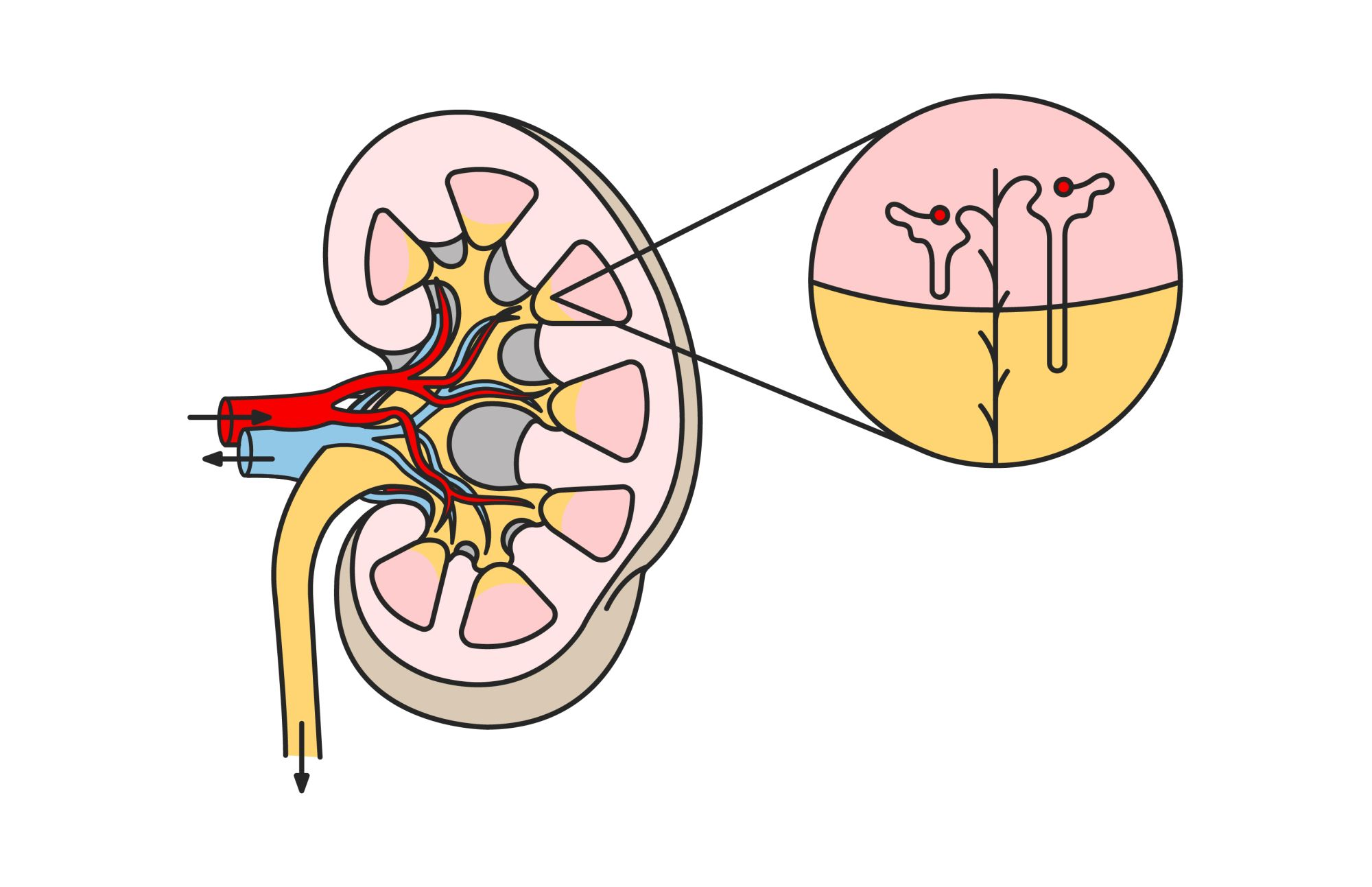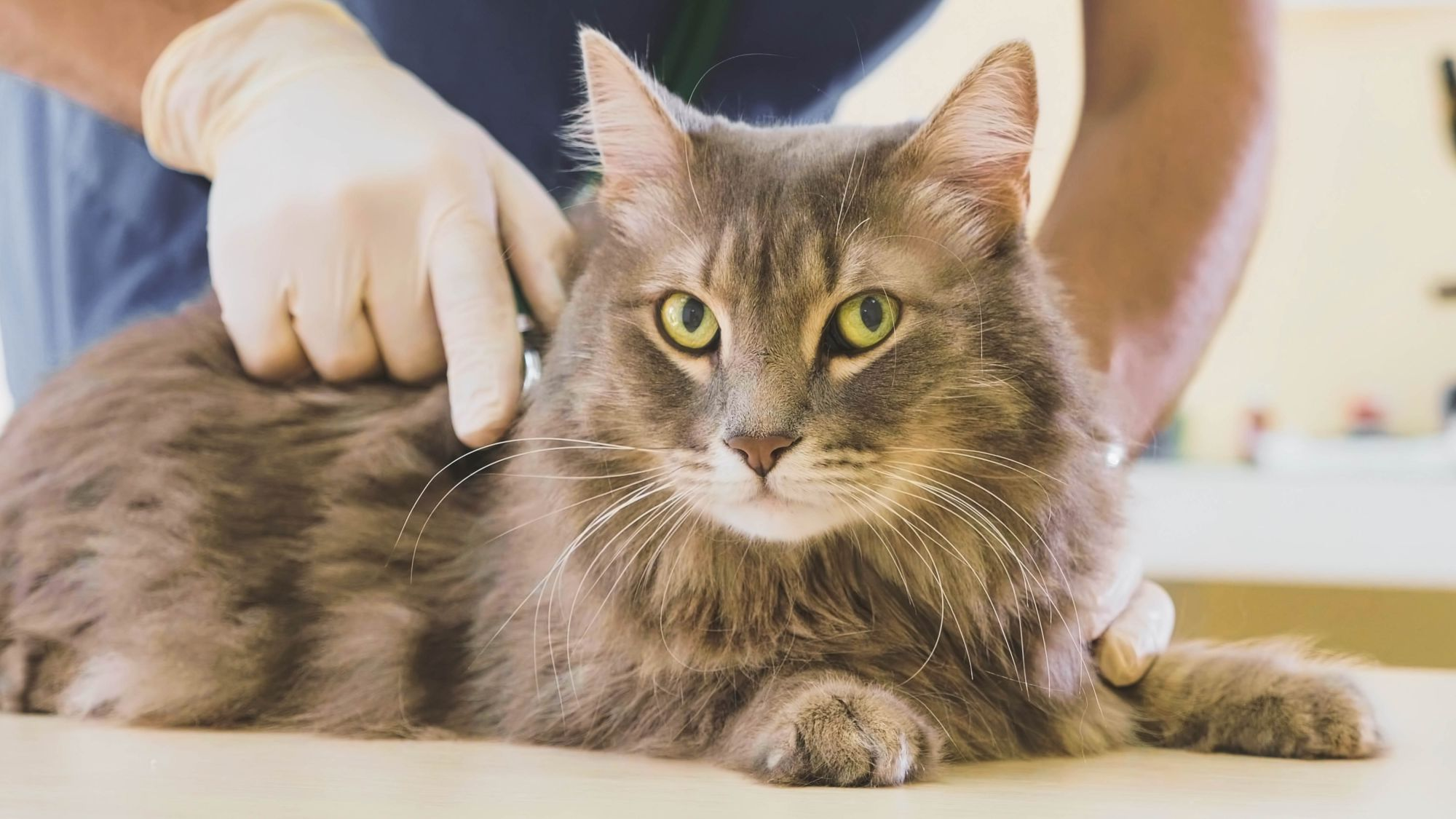Chronic Kidney Disease in Cats
Article

Chronic kidney disease (CKD) is an irreversible condition that affects 30% of cats over the age of fifteen.1
While there is no cure for CKD, early diagnosis and management may slow the rate of kidney damage.
Here we look at the causes of CKD, the challenges of diagnosis, and some of the therapies available to cats suffering from the condition.
What Do the Kidneys Do?
Like us, cats have two kidneys that work to filter blood, eliminate waste products, balance fluids, manage blood pressure, and create hormones. Their role is vital to the body’s survival.When the kidneys fail, the resulting condition can be either acute or chronic.

Acute kidney injury (AKI). Also called acute kidney failure, an AKI occurs when the kidneys suddenly stop working, causing waste products to accumulate in the body. Trauma, toxins, infection, sepsis and loss of blood supply may all cause an AKI.
AKIs are potentially life-threatening and require immediate medical attention. While a cat may recover from an AKI, they do increase the cat’s risk of developing CKD in the future.
Chronic kidney disease (CKD). In this article, we’ll be discussing CKD, which is a continual loss of kidney function that takes place over many months or even several years.
Inside your cat’s kidneys are thousands of microscopic filtering units called nephrons, which constantly recycle or eliminate substances from the bloodstream. If the kidneys are damaged, it can lead to a loss of nephron function.
With fewer filters available, unwanted waste accumulates in the bloodstream and useful substances that should be recycled are eliminated instead. As the toxins and wastes in the bloodstream increase, they may cause further kidney damage, resulting in a self-perpetuating injury that cannot be reversed.
What Causes Chronic Kidney Disease in Cats?
Most cases of CKD won’t have an identifiable cause, however, there are several known triggers:An acquired disease
Aging
Autosomal dominant polycystic kidney disease (AD-PKD)
This inherited condition primarily affects Persian or Persian cross cats.2 Breeders will often screen for AD-PKD, but a vet can perform a genetic test if you think your cat may be affected.
How is Chronic Kidney Disease Managed in Cats?
First, it’s important to understand that CKD is called chronic because it’s a persistent, long-lasting condition.A cat’s signs, and the management they need, will change over time depending upon the advancement of the disease and the amount of kidney function that has been lost.
IRIS (International Renal Interest Society) has established internationally recognized guidelines on the diagnosis and management of CKD disease. CKD is split into 4 IRIS stages, progressing from 1 at the onset to 4 at its most severe.
The rate that a cat progresses through each IRIS Stage varies significantly depending upon the individual.
What are the Cat Kidney Disease Signs?
Kidneys have a large capacity to filter blood, and so you may not notice any signs of kidney disease in your cat until a significant amount of kidney tissue has already been damaged.
In IRIS stages 1 and 2 CKD, the signs are more subtle, but in IRIS stages 3 and 4, the signs will be more pronounced. Signs at any stage could include:
- Urinating frequently
- Drinking more water
- Decreased appetite
- Losing weight
- Lethargy
- Vomiting
- Weakness
- Diarrhea
If you’d like more information about these signs, see our dedicated article about The Signs of Chronic Kidney Disease in Cats.
How is Chronic Kidney Disease Diagnosed?
Diagnosing CKD is challenging. Traditionally, a veterinarian would check the urine concentrating ability of your cat and analyze the concentration of creatinine in a blood sample to determine if they are suffering from CKD. However, creatinine doesn’t increase significantly until around 75% of kidney function has been lost.
More recently, a blood test has been developed to identify elevations in SDMA (Symmetric Dimethyl Arginine) which can increase with as little as 25% kidney loss.3 Combined with the use of serum creatinine and urinalysis, SDMA testing may detect the signs of CKD many months earlier than traditional tests.
Another new breakthrough is using artificial intelligence and machine learning to detect if a cat is at risk of developing CKD. The predictive tool developed by Antech Diagnostics, RenalTech(TM) can predict with >95% accuracy4 if a cat is at risk of developing CKD up to 2 years prior to onset. Armed with this information, a veterinarian can provide monitoring and therapy to support the kidneys from the very earliest stages of the disease.
Learn more about RenalTech(TM) here.
An early diagnosis of CKD can significantly affect a cat’s longevity5 and so it’s important that you take your cat to the veterinarian for regular check-ups – whether you suspect CKD or not.
How is Chronic Kidney Disease Treated?
Management of CKD is focused on slowing the progression of the disease, preserving the cat’s quality of life and managing the clinical signs that appear in later stages.
The exact management will vary depending upon the stage of CKD and can be discussed with your veterinarian, although you can also support your cat through each of the disease stages by:
- Ensuring they always have fresh water
- Maintaining good oral health
- Taking them to the veterinarian for regular monitoring
- Looking out for signs that may show the disease has progressed
A tailor-made food for cats with kidney disease like Royal Canin Renal Support is carefully balanced with restricted, high-quality protein and offers a range of kibble shapes, textures, and flavors, to encourage eating throughout all stages of CKD.
You can more learn about the importance of nutrition in supporting cats with CKD in our article: Your Guide to Renal Food for Cats with Kidney Disease.

As mentioned previously, IRIS has established internationally recognized guidelines on the diagnosis and management of CKD disease. Your veterinarian will assess which IRIS stage your cat is currently in as this will help them recommend appropriate management.
IRIS Stage 1
A change in diet is often recommended to decrease the amount of dietary phosphorus – a major nutrient that affects CKD progression.IRIS Stage 2
Many of the toxic substances that accumulate in the bloodstream during CKD are a result of the body breaking down protein, so a further change in diet is typically needed at IRIS Stage 2 to restrict the amount of protein the cat consumes and decrease dietary phosphorus intake further.IRIS Stage 3
Veterinarians will take steps to manage the clinical signs that present themselves at stage 3. For example, cats with CKD can lose muscle mass and experience low blood potassium. This can result in them suffering from weakness. To overcome this, a veterinarian may recommend potassium supplementation.IRIS Stage 4
The signs of CKD become more pronounced. Your veterinarian will proactively manage these signs with the appropriate treatment, such as intravenous fluids, feeding tubes and drugs.
While the goal continues to be delaying the progression of CKD, there is an increased emphasis on preserving quality of life.
CKD is an extremely challenging condition to spot. Making sure your cat has regular veterinary check-ups is the best way to achieve an early diagnosis and is the most effective way to manage the condition. Speak to your veterinarian if you have any questions or concerns.
References:
1 Polzin DJ. Chronic kidney disease. In Bartges J, Polzin DJ, editors. Nephrology and urology of small animals. Ames (IA): Wiley- Blackwell, 2011: 433-471.
2 2020, 'Renal Disease', Veterinary Focus, vol. 30, no. 1, pp. 30-31.
3 Hall JA, Yerramilli M, Obare E, Yerramilli M, Jewell DE. Comparison of serum concentrations of symmetric dimethylarginine and creatinine as kidney function biomarkers in cats with chronic kidney disease. J Vet Intern Med. 2014;28(6):1676–1683.
4 Bradley R, Tagkopoulos I, Kim M, Kokkinos Y, Panagiotakos T, Kennedy J, De Meyer G, Watson P, Elliott J. Predicting early risk of chronic kidney disease in cats using routine clinical laboratory tests and machine learning. J Vet Intern Med. 2019;33(6):2644-2656.
5 Boyd LM, Langston C, Thompson K, Zivin K, Imanishi M. Survival in cats with naturally occurring chronic kidney disease (2000-2002). J Vet Intern Med. 2008 Sep-Oct;22(5):1111-7.
Related Articles
Like & share this page